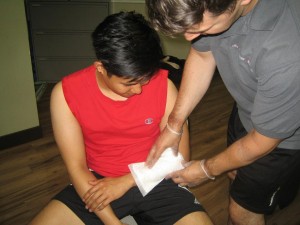It is important to note that burning skin can be considered as a sore condition that can occur once the skin came in contact to fire, prolonged sun exposure or hot surfaces. Burns can affect various layers of the skin. When it comes to a first degree burn, it is superficial since it only affects the outer layer of the skin or epidermis. A second degree burn or partial thickness burn involves the epidermis and the dermis. Lastly, a third degree burn of full thickness burn involves all the skin layers such as the epidermis, dermis and the fat layer. Remember that burning skin can eventually lead to extensive and even life-threatening complications if not treated right away or correctly.
Dehydration
Burning skin that covers a wide area of the body can result to dehydration. Understandably, the skin loses its fluid content once it is burned. The indications of dehydration include thirst, dizziness, lightheadedness, scanty urination and weakness.
Infection
If an individual has burning skin, it can put him/her at individual at risk for infections. Oftentimes, it can be difficult to distinguish the difference between the redness of a burn as well as the redness of an infection.

Pay close attention to the color of the burning skin. Oftentimes, an infection develops if the skin is swollen or purple. In addition, the burn can even creep into the deeper skin layers. An infection in first degree burn can spread to all the skin layers. In some cases of infected burns, there is discharge of a greenish substance or pus along that is accompanied by fever.
Shock
Burning skin can eventually lead to shock. Remember that shock is a medical emergency where the blood pressure drops so low that there is not enough blood to circulate in the essential organs in the body.
Skin cancer
An individual with sunburned skin is at risk for developing skin cancer. Prolonged and constant exposure to the sun can alter the genetic material of the skin or DNA (deoxyribonucleic acid). Remember that skin cancer typically forms on the face, chest, arms, legs and lips.
Other possible side effects
When it comes to deep burns, it can lead to scar formation, skeletal muscle breakdown and eschars. The eschars are described as dead skin that oftentimes develops as the burned skin is healing. These thick patches of necrotic skin can disrupt the flow of blood. As for skeletal muscle breakdown, it can result to the release of myoglobin (protein in the muscle) that can eventually reach the kidneys and trigger kidney failure.
It is vital to properly manage burning skin as soon as possible in order to prevent complications from developing such as infection. If in doubt on how to care for this injury, a doctor should be consulted for proper treatment of the affected skin.
